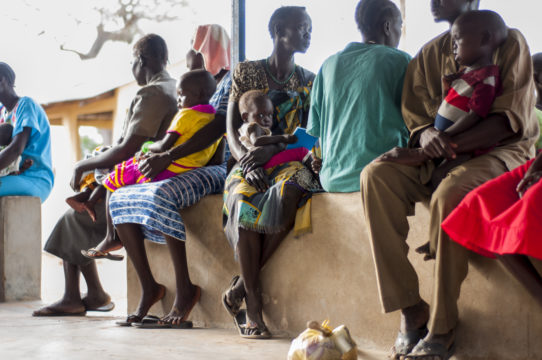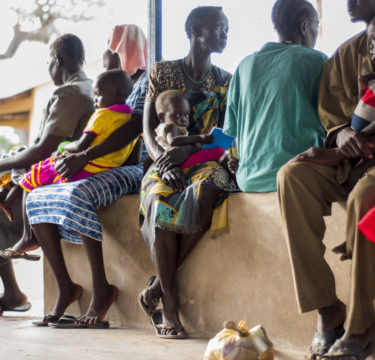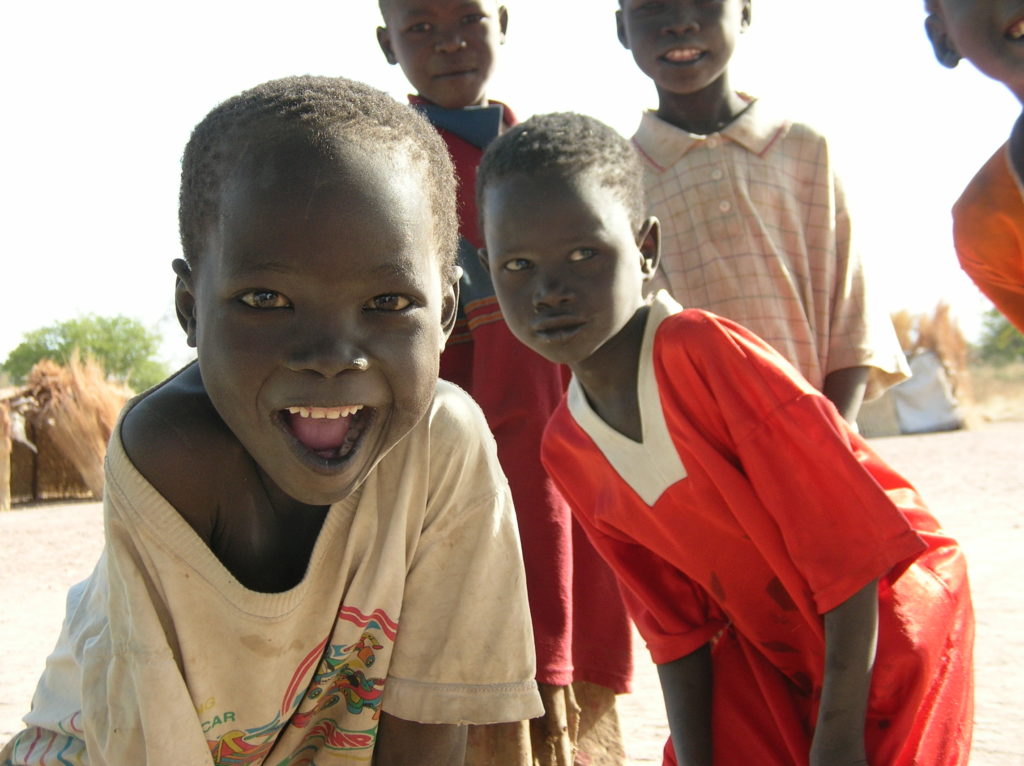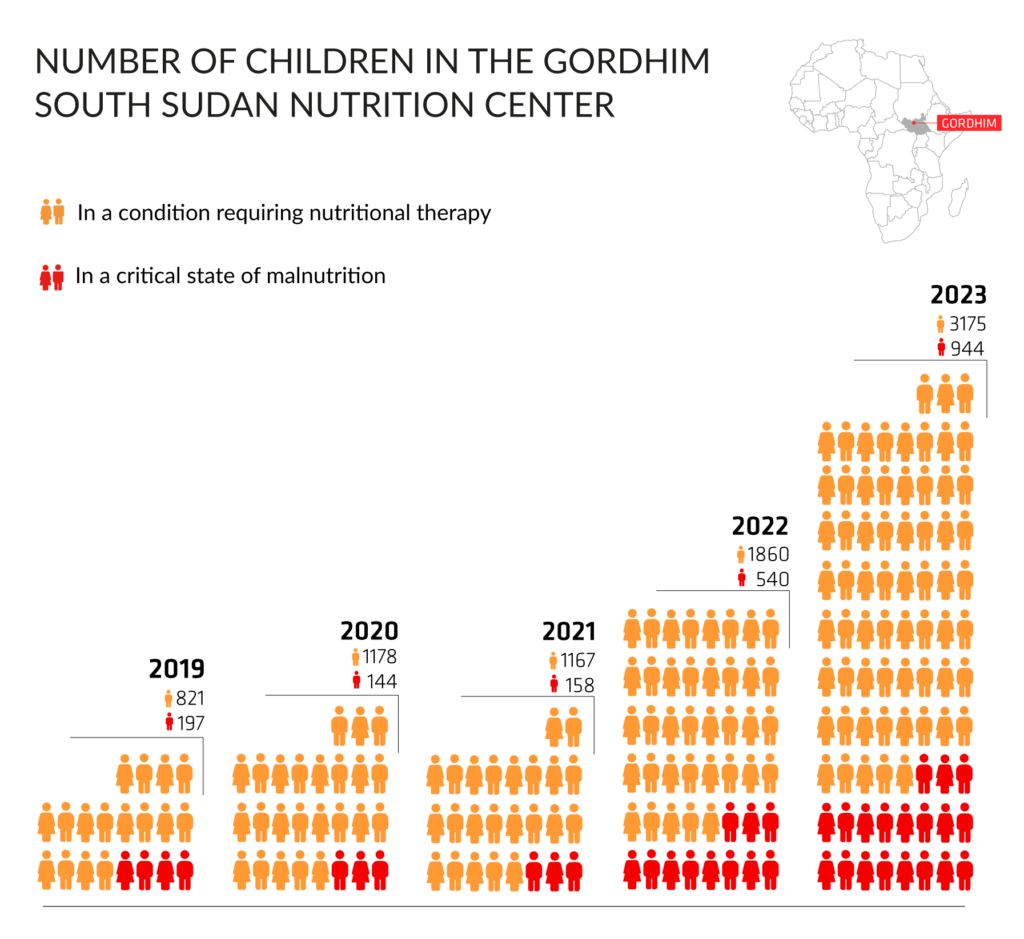South Sudan on the Brink and in the Trap


South Sudan and its history are inextricably linked to its northern neighbor, Sudan, which appeared on world maps as an independent entity on January 1, 1956. In the shadow of political turmoil, the country, never rich, was plunged into an even deeper crisis. The Polish Center for International Aid is saving the lives of children in South Sudan, where over 10 million people are starving or in need of food assistance.
South Sudan is one of the countries with the worst health indicators in the world. The under-five mortality rate is 112 per 1,000, while the maternal mortality rate is almost 2,054 per 100,000 live births. The country has been plagued by conflicts and natural disasters since its inception. As a result of internal fighting, 2.3 million people have been displaced, and at least tens of thousands have been killed. Almost half of the population does not have access to clean drinking water. In 2017, the UN declared the highest, fifth level of famine threat in parts of the territory. The Polish Center for International Aid has been helping South Sudan almost from the beginning by providing therapeutic food. This saves the lives of starving children. Unfortunately, the Foundation helps only in one place, and even that is very difficult due to the internal turmoil that has been piling up over the country for decades.

For centuries, Sudan and its southern region have been under the gaze of numerous civilizations, starting with ancient Egypt. The Kingdom of Kush, which rivaled Egypt for centuries, flourished in the territories that now comprise the two Sudanese states. Eventually, the 18th Dynasty conquered the region as far as Khartoum, ushering in the New Kingdom era at the end of the Second Intermediate Period.
The Legendary Kingdom of Prester John:
After centuries, Sudan fell under Arab rule and cultural influence. Islam arrived alongside the Arabs, but the southern part of present-day Sudan experienced a different influence. During the Middle Ages, the legend of Prester John’s kingdom emerged, a Christian state far to the south that resisted Arab culture. While the legend contained elements of myth, there was a kernel of truth: Abyssinia, or present-day Ethiopia, was a real Christian kingdom. Christianity thus spread to southern Sudan. For centuries, this posed no problem, as the greater threats came from Egypt’s ambitions or, later, the British colonial era. Sudan was further disrupted by the Mahdist uprising, which gained widespread attention in popular culture with the siege and fall of Khartoum.
South Sudan: Independence and War
Sudan declared its independence on January 1, 1956, and the first civil war broke out that same year. The Khartoum government, under an agreement with Great Britain, was obligated to establish a federal state with significant autonomy for the regions. This was to be the case for the southern part of Sudan, which was predominantly inhabited by people of Christian faith and various animistic beliefs. However, Khartoum immediately made it clear that it wanted to introduce unitary rule and that there would be no talk of autonomy. People from the southern parts of the country took up arms, fearing Arab and Islamic domination. In 1972, the war ended with the South being granted extensive autonomy.
The Second Civil War and the Struggle for Independence
However, the agreement was not respected by the North, especially when oil deposits were discovered in the South. Additionally, tensions were heightened by President Jaafar Muhammad al-Nimeiry’s decision to transform Sudan into an Islamic republic, where Sharia law was introduced. The second civil war broke out in 1982 and was even bloodier than the first. While the nomenclature suggests that there were two wars, it was actually one conflict with one longer ceasefire.
The war finally ended in 2005, when it was decided that the southern provinces would hold a referendum on whether they wanted to live in Sudan as an autonomous region or become a separate state. 98% of South Sudanese voted for independence, partially solving the problem left by the British, who had thrown together such disparate communities into one “bag”. The long civil war claimed the lives of over 2 million people and forced over 4 million to leave their homes.

Mounting Problems
The years of war devastated this one of the poorest countries in the world. Unfortunately, independence did not solve the country’s other problems. Despite political independence, South Sudan is still fully dependent on Sudan, both economically and infrastructurally. Its northern neighbor is grappling with instability, plagued by internal conflicts and unstable governments. This, coupled with the climate catastrophe, years of drought, and flash floods, means that according to the WFP, 2.9 million people are starving and 7.7 million need food assistance. It’s as if every fourth person in Poland was starving or malnourished.

The Polish Center for International Aid (PCPM) is also monitoring the situation and has been helping in South Sudan since the country’s inception. In the past year, the Gordhim Supplementary Feeding Center has treated as many children with severe malnutrition as have come to the center in the past 3.5 years combined. Children with moderate malnutrition have been treated as many as have come to the center in the past 2.5 years. In 2024, PCPM provided 45,000 servings of therapeutic food to the the Supplementary Feeding Center, but these supplies were already exhausted by September. Unfortunately, according to preliminary data, 2024 will be even more difficult. In the first quarter of this year, the Center admitted nearly 1,500 malnourished and severely malnourished children.
